The Aerocool Touch 1000 is a 4 channel, 6 watt per channel automatic fan controller which fits in a single (5.25-inch) drive bay. It has a touchscreen display, an overheating alarm temperature warming, and a lock function to prevent inadvertent changes. The Touch 1000 is essentially a single-bay version of the Aerocool Touch 2000 (which was previously reviewed on this website), so it will be interesting to see how it compares with the Touch 2000. With the touchscreen display, it definitely has aesthetic appeal, but at this price ($47.00 on Amazon as of this writing), you’ll want to make sure it meets your needs before buying it.
The Aerocool Touch 1000 comes in a small box. The front of the box shows a large image of the LCD touchscreen display. The back goes into the features, specifications, and labels the buttons on the panel. These features are listed in many different languages.
When you open the box, you’ll find that the panel comes neatly packed in the box with some cardboard padding. A sticker protects the touchscreen from any scratches or thumbprints. Also included with the controller are the user manual and some extra parts. The controller includes screws for the fan, tape to hold the sensors in place, two extra sensors and two extension cables.
The Touch 1000 has an LCD touchscreen with black anodized aluminum. The panel can display data for up to four temperature sensors and four fans; only one of each is viewable at a time, but by tapping a button, you can rotate through the four readings.
Aerocool Touch 1000: Installation
Installation is fairly easy: just slide the controller into an empty 5.25-inch drive bay and secure it to the case with the included screws. Then you can place the temperature sensors where you want them to be and connect up the fans.
The fan connector cables are labeled FAN1 through FAN4 and the temperature sensors are labeled: CPU, VGA, HDD, and SYS. Each set of cables can be kept together, or each wire can be pulled apart.
In the center of the panel is the Aerocool logo, which can be pressed to lock and unlock the panel. To the left and right of this logo are arrows which will scroll through the fan and temperature readings (even when the panel is locked). Towards the left of the arrows is the RPM readout, and towards the right of the arrows is the temperature readout (in Celsius or Fahrenheit). A plus in the top right corner and a minus in the lower left corner allow you to make any needed adjustments to your temperature alarm or fan speed. The upper left of the panel shows which fan the curent RPMs are, while the bottom right shows which temperature sensor is being displayed.
One of the drawbacks of this controller is that, at only 6 watts per channel, it pales in comparison to some equivalently-priced and lesser-priced controllers (for example, the Aerocool Touch-E, also reviewed on this site, is cheaper and boasts 20 watts per channel). You may have problems running more than one fan on a single channel, and you’ll definitely want to make sure this controller is powerful enough to accommodate your fans. But if you want a controller with an attractive touchscreen display, and especially if you like the Touch 2000 but can’t spare two drive bays, the Touch 1000 is definitely a controller to consider.
Aerocool Touch 1000 Specifications:
- Dimension: 149.5(W) x 42.5(H) x 70(D) mm
- Box Dimension: 186(W) x 60(H) x 110(D) mm
- Net Weight: 220g
- Gross Weight: 390g (Retail box included)
- LCD viewable area: 118 (W) x 25 (H) mm
- Connectors: 4 x 3-pin connectors / 4 x heat sensors
- Material: Brushed aluminum front bezel w/ steel bracket
- Max wattage per fan channel: 6W
- Inside this packaging: screw 4 (M3x5) / sensor sticker x 6 / spare sensor cables x 2 / spare fan cables x 2
Product Links:
Aerocool Touch 1000 product page on aerocool.us
Aerocool Fan and Temperature Controller (Touch1000) on Amazon

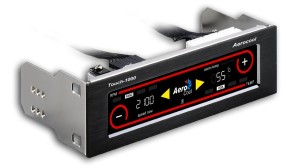

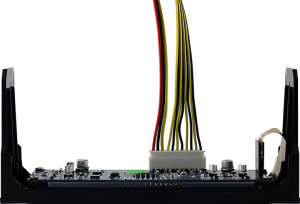
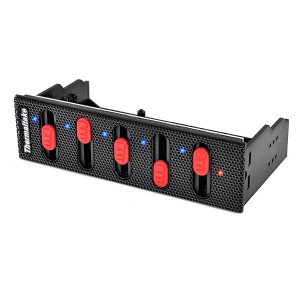
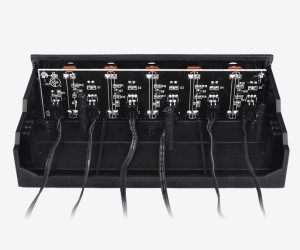
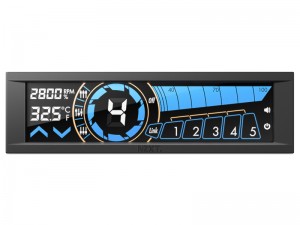
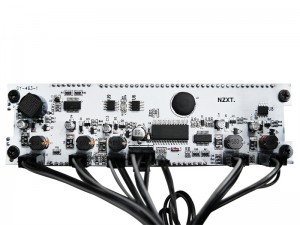
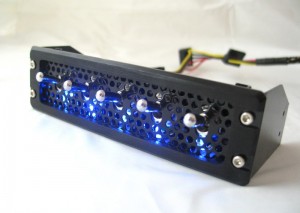
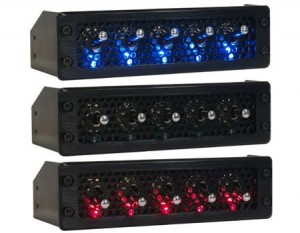
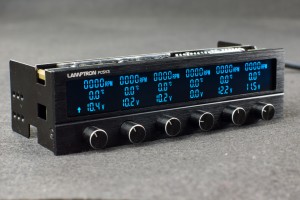
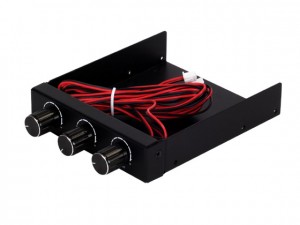
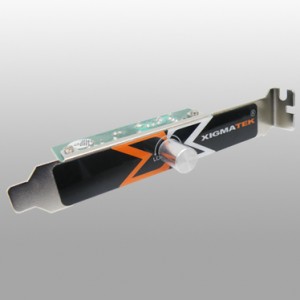

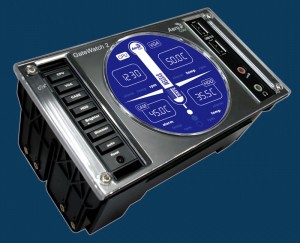
Recent Comments